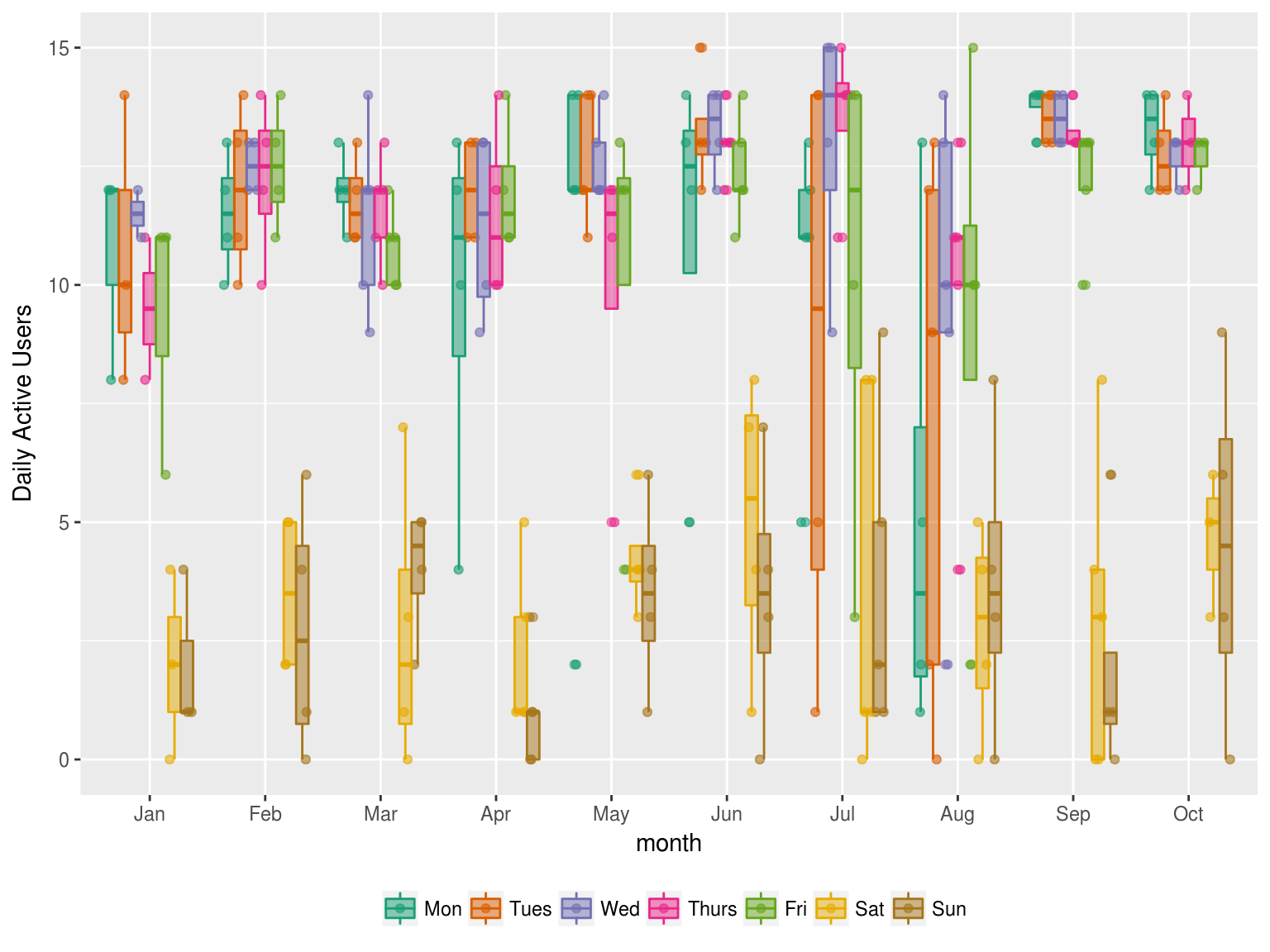Slack is a free to use communication platform for teams that allows its members to easily send messages, share files and manage to-do lists. As usual, when I hear that people are excited about a new tool or app, I can’t wait to test it out. So I introduced Slack to some of my colleagues, we set up a team for our lab and tried it out for a couple of days. It was not a succes.
However, I’m quite sure that almost one year later the use of Slack within research labs definitely rose in popularity after the Nature editorial ‘How scientists use Slack’ (29 december 2016). So I had to give it another shot! I tried convincing everybody in the lab including our PI @sarahlebeer and created a new team. Apparently I was not the only one who got inspired by this article as by the end of January I was already part of 4 different teams.
I just my 3rd #slack invitation in 2017. At this rate, I will be a member of 60 teams at the start of 2018. #Loveit
— Sander Wuyts (@s_wuyts) January 19, 2017
Just got invite number 4! Still on track! https://t.co/cXbTKqgdiG
— Sander Wuyts (@s_wuyts) January 29, 2017
Now, 10 months later, our lab heavily uses Slack as a platform to discuss our different research projects, share the latest hot research papers and remind us of general lab duties. Time to evaluate our usage!
Data collection
Every team member has access to their team’s Slack analytics page, which shows a couple of great graphs. However, the free plan that we use has limited functionality. Luckily, Slack has a shiny cool button on the top right of their analytics page saying ‘Export to csv’. Great! That’s way more useful than the parser I wrote to get some statistics from the ‘Weekly Update’ e-mail that Slack sends. So I used this csv, read in the data in R and (of course) made it tidy.
Users and channels
Surprisingly, Slack was adopted pretty fast and in mid January all of our 14 lab members joined the team as you can see in the graph below. We had a temporary increase during summer as we had an intern who was welcome on Slack during his internship, but was later removed again.

The amount of channels seemed to increase from adoption until May. Then, apparently, we did not feel the need to create any new channels anymore up until August. However, in the beginning of October channel creation boomed again, mainly due to our lab technician who set up a few channels for reminders.
Now let’s have a look at the amount of Daily active users:

The first thing that I’ve noticed is the reduction in active users on Saturday and Sunday. Good thing that we focus on other stuff in the weekend! Furthermore, it’s easy to spot when the university is closed. For example, one Monday in April shows only 4 active users which I traced down to be Easter Monday. Similarly, Labour day and Ascension day/weekend reduced the activity on Slack in May for a Monday, Thursday and Friday. Also, most of us take holidays during July or August, two months that show much more variability regarding activity on weekdays. And finally, everybody seemed to got tired of all these holidays as September and October shows a high activity again (even on Sundays in October)!
Messages

In total our team posted around 25 000 messages. The beginning of June seems to show an increase in posted messages, probably due to the fact that @swittouck and me, both heavy slack users, were finalising our joint publication (more about that publication here). Again, holiday season (July and August) can be detected as the increase in amount of posted messages stagnates during that period.
Finally, this dataset also contains the % of messages posted in Public Channels and % of messages which are Direct Messages (DMs):

At first it was a bit surprising to me that in general our team seems to prefer DMs instead of posting in public channels. However, when I thought about it, I must say that I often use Slack to ask quick questions to one single team member or to send over a file using direct message instead of disturbing everybody in a public channel. Furthermore, the above graph also shows some days where the % of public messages were extremely high. These all seemed to be either holidays or weekend days on which the amount of messages were very low compared to a regular working day. Communication between colleagues (on Slack) is usually reduced on those days, but if somebody still felt the necessity to share anything on Slack, then apparently the public channels were more attractive than DMs!
To conclude, I’d like to say that I really love the way our team uses Slack. It improved our communication and took away some heavy load from our (and especially our PI’s) mailbox. If you’re not using it yet in your team, definitely give it a shot!
All data was analysed using R and Tidyverse packages. An R markdown file containing all code can be found on Github.